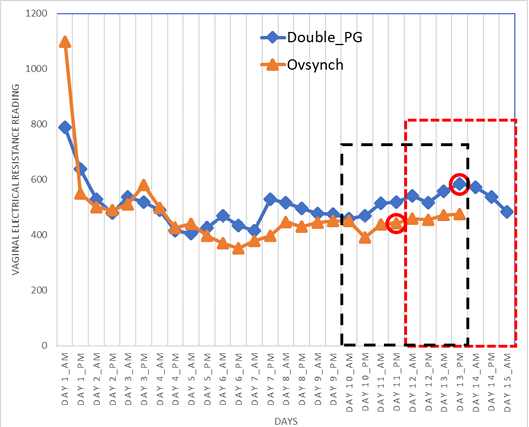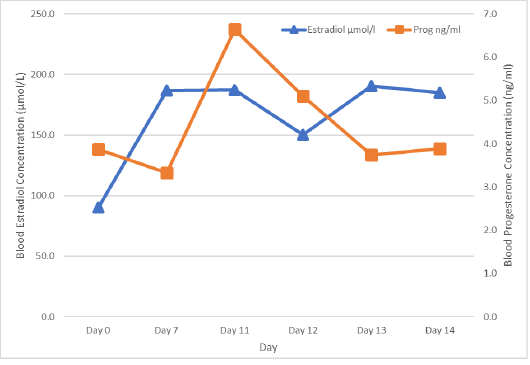Efficacy of Vaginal Electrical Resistance Measurement in West African Dwarf Goats Synchronized using Ovsynch and Double PG Protocol
Efficacy of Vaginal Electrical Resistance Measurement in West African Dwarf Goats Synchronized using Ovsynch and Double PG Protocol
Olagbaju Olawole1, 2, Ayoola Mathew*1, Lawal Tunde1, Olorunleke Solomon3, Oladejo Opeyemi1, Oguntunji Abel1 , Alabi Olufemi1 , Aderemi Foluke1, Ajayi Abimbola1
Mean vaginal resistance reading for does in the control and experimental group. The red rings signify the onset of estrus (standing heat) in the does. WAD does in the control group (n=12) was observed to come on heat at different intervals.
Average vaginal electrical resistance reading for does in groups 2 and 3. The orange and blue arrows indicate the last hormonal treatment. The red and black dotted boxes show the duration of the estrus periods post the last hormonal treatment. The chart showed that at the beginning of the experiment, the does were at different stages of the oestrous cycle. The VER post-hormonal treatment chart is however indicated in the dotted box (red for group 2 and black for group 3). The red rings indicate the likely time of ovulation after the completion of the hormonal treatment.
Hormonal profile of WAD does subject to the double does of prostaglandin (group 2).
The hormonal profile of WAD does subject to the Ovsynch protocol (group 3).









